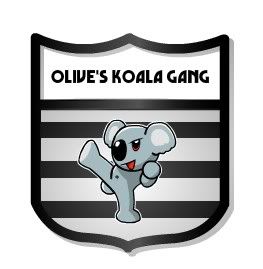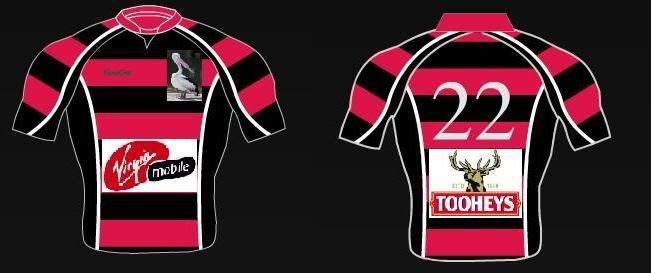FYI guys a run down of how it works.
What is NRLCEO?
NRLCEO is a fantasy rugby league management game played against a number of other franchises. It is based on the NRL competition with a players performance in the NRL determining how a NRLCEO team performs each week. NRLCEO runs exactly like the NRL in that a franchise plays another franchise with the winning team each round getting two premiership points. The make up of a franchise is discussed below.
Like the NRL, NRLCEO has a draw with all teams playing each other over a number of specified rounds. Depending on the start of the NRLCEO competition (normally round 1 of the NRL) a full season will go for normally 23 rounds with three weeks of finals (note that NRLCEO does not operate during the finals series of the NRL). Depending on the size of the NRLCEO Competition and the number of franchises, the finals series length will vary but usually concludes with the Grand Final being played in correspondence with the final regular season NRL round.
This can all be fully customised by the person who creates the competition. The number of franchises in a competition is determined by the person who initially creates the competition. Before setting up a competition, one must consider a number of variables that they may want to change. The default variables are what NRLCEO has been based on previously but can be obviously customised to suit. Once a competition is set up, other coaches can be invited to enter a franchise into that competition and are given a competition password to enter via the appropriate site links. Once a coach has been invited to enter a competition, they will then be required to register details about the franchise. These details can be changed by the coach when in the franchise home page via the Change Details link at the bottom.
What is a Franchise? An NRLCEO fantasy rugby league franchise is usually made up of 25 players. When you set up a competition, restrictions to the types of players that can be recruited can be set in the rules. These restrictions revolve around a players NRLCEO position and how many of each you are allowed to have in your squad. The table below shows the typical maximum number of players (default) of a certain position that a franchise can contain in their squad. When a competition is created these restrictions may be changed but keep in mind that restricting squad sizes and positions allows for a much more even competition by allowing coaches to recruit unsigned players and trade with other franchises.
POSITION NUMBER IN SQUAD
Fullbacks 3
Wingers 6
Centers 7
Five-Eighths 3
Halfbacks 3
Backrowers 8
Hookers 3
Frontrowers 6
As can be seen in the NRLCEO list of NRL players, via the Competition Details Players List link, many players do not simply fall into a specific position. They are listed across numerous. Therefore, position numbers must be taken into account when selecting that player. A player who plays across many positions can provide your squad with versatility during injuries and byes but too many can also become restricting. This can also affect trades and recruitments. A player can only be picked for one franchise so once he is selected, that franshise has exclusive rights to him until he is cut or traded.
The Scoring System Points are allocated for each franchise based on individual players and their performance in the NRL games for that round and the points they score. Just like in the NRL, if a player scores for their team, the NRLCEO franchise also gets benefited with those points as long as they have been named.
An example of this is below:
Israel Falou scores three tries for the Broncos in round 1. An NRLCEO franchise has recruited Falou and named him in their round 1 team in the centres. That team will be accredited with 12 points (3 tries @ 4 points each)
All players can score points for their NRLCEO team through scoring tries in the actual NRL game. Kickers must also be named by coaches and score two points for each successful kick as well as any other points they get through tries and workhorse tries.
An example of this can be seen below:
Jonathan Thurston scores two tries and kicks 6 goals in round 1 for the Cowboys. The NRLCEO franchise that has named Thurston in their team as their kicker, therefore gets accredited with 20 points (8 points for the two tries and 6 conversions worth 2 points each)
There is also another scoring feature called a Workhorse Try. A Workhorse Try is only awarded to players named in the forwards for the NRLCEO franchise and is achieved if that forward makes a combination of 40 or more tackles and runs. If they do achieve this, the Workhorse Try benefits the team with 4 points. Each forward can only get one Forward Try per round but the player must be selected in the forwards for the weeks line up. An example of a Workhorse Try would be: A NRLCEO Franchise names Robbie Farah. He scores one try in round 1 for the Tigers but also makes 35 tackles and 8 hit ups. The NRLCEO franchise that has named Farah in their team as a Hooker gets accredited with 8 points (4 for the Try and 4 for the Workhorse Try over 40 combination of runs and tackles) Using the previous example: If Robbie Farah was selected at halfback he could not earn your team a Workhorse Try. Players can also be deducted points based on on-field infringements. Below is a complete summary of point of how a player can score and be deducted points and the amounts awarded:
Scoring Method Points
Try 4
Goal 2
Field Goal 1
Workhorse Try 4
Sin Bin -2
Send Off -6
These points are the default settings only for each competition and can be customised to allow for many additional points scoring systems. The following points scoring initiatives can be introduced to create a unique competition scoring system:
Scoring Method
Line break
Try Assist
In a winning NRL match
In a losing NRL match
In a drawn NRL match
A coach also has the ability to influence a match (if your competition is customised for this), use your knowledge of the game to helpyour players from time to time by also allocating points for correct or incorrect tips in the tipping competition. Getting a Competition Started To set up a competition, there must be enough coaches willing field a franchise in order to fill the competition.
Competitions can be set up for 4, 6, 8, 10, & 12 franchises. However, something to consider for the creator is that generally the less franchises in the competition, the more quality players there are to choose from for each franchise. This will generally lead to a closer competition and more enjoyment from interaction with other franchises in trade deals.
Once enough franchises have been nominated, it is now time to select a squad of players. This is done via the Draft.
The Live Draft The Live Draft is the pre-season recruitment method used in NRLCEO and is a pick for pick system that is designed to allow all franchises in the competition the opportunity to get a solid and competitive squad. Franchise coaches are required to enter the live draft via the Competition Details Preseason Draft link. When the page indicates that it is your turn to pick you are free to choose whatever player you like as long as it adheres to the rules of the competition.
Each live draft consists of 25 rounds meaning that up to 25 players can be picked by each franchise during the draft process. They are able to do this one player at a time for each round of the draft. It is important to note that a player can only be picked for one franchise, so once he is selected, that franchise has exclusive rights to him until he is either cut or traded.
During the live draft, the pick order is randomised and each round, coaches are able to see when their picks are for the next two rounds only. For whatever reason, coaches are able to forfeit a pick and once the live draft is over, are able to pick players until their squad of 25 players is complete. Once the NRLCEO franchise has 25 players, changes can then only be made to the squad via cut, recruiting or trading players with other franchises. At this stage, it is anticipated that NRLCEO will provide a salary cap type recruitment method next season. Therefore, competition creators should take note that the live draft is the only recruitment method available at this time and should be chosen when setting up a competition.
Selecting your Franchise's Line Up Each week, coaches are required to name their franchise. Coaches can do this via the Manage Team Line Ups link. That means, with 25 players to choose from in the squad, a coach must select their best 17 based on who they think will score them the most points during that round. Be careful, your selections could mean the difference between a win and a loss. The coach must also choose a kicker for that week as well as the captain. Depending on how your competition is customised, your captain can either be just another player or could score double points (goals not included) for the week. Similarly, the bench players could either be like regular players or score half points depending on the customisation of your competition.
Players must be selected in appropriate positions with the bench made up of two backs and two forwards. Where players have multiple positions, coaches have that luxury to position them in the team in any of the nominated positions. An example of this is shown below: Robbie Farah is listed as a Halfback and a Hooker. That means if selected by the NRLCEO coach, Farah can be listed in the team as either a Halfback or a Hooker. This will therefore affect Farahs scoring potential depending on the position he is selected in. (See Workhorse Try)
Winning Each Week The winning franchise at the end of the round is the team with the highest total of points. Typically, an NRLCEO franchise will score between 30 and 50 points but more or less points does occur depending on the quality of the NRLCEO franchise and how their individual players perform in the NRL. Like the NRL, two points are awarded for a win, one point for a draw and none for a loss. At the end of the regular season, the top franchise is crowned Minor Premiers and the Finals series begins. The finals series is also able to be customised and includes various methods of achieving a grand final match up.







